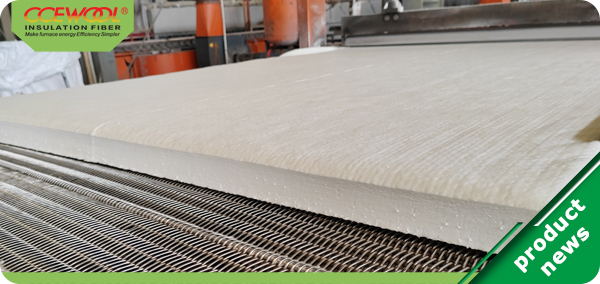This issue we will continue to introduce refractory fibre insulation materials used in furnace construction
1) Refractory fibre
Refractory fibre, also known as ceramic fiber, is a kind of man-made inorganic non-metallic material, which is a glass or crystalline phase binary compound composed of Al2O3 and SiO2 as main components. As a lightweight refractory insulation material, it can save energy by 15-30% when used in industrial furnaces. Refractory fiber has the following good characteristics:
(1) High temperature resistance. The working temperature of ordinary aluminum silicate refractory fibre is 1200°C, and the working temperature of special refractory fibre such as alumina fiber and mullite is as high as 1600-2000°C, while the refractory temperature of general fiber materials such as asbestos and rock wool is only about 650°C.
(2) Thermal insulation. The thermal conductivity of refractory fibre is very low at high temperature, and the thermal conductivity of ordinary aluminum silicate refractory fibre at 1000 °C is 1/3 of that of light clay bricks, and its heat capacity is small, heat insulation efficiency is high. The thickness of the designed furnace lining can be reduced by about half compared with the use of lightweight refractory bricks.
Next issue we will continue to introduce refractory fibre insulation materials used in furnace construction. Please stay tuned!
Post time: Mar-27-2023


